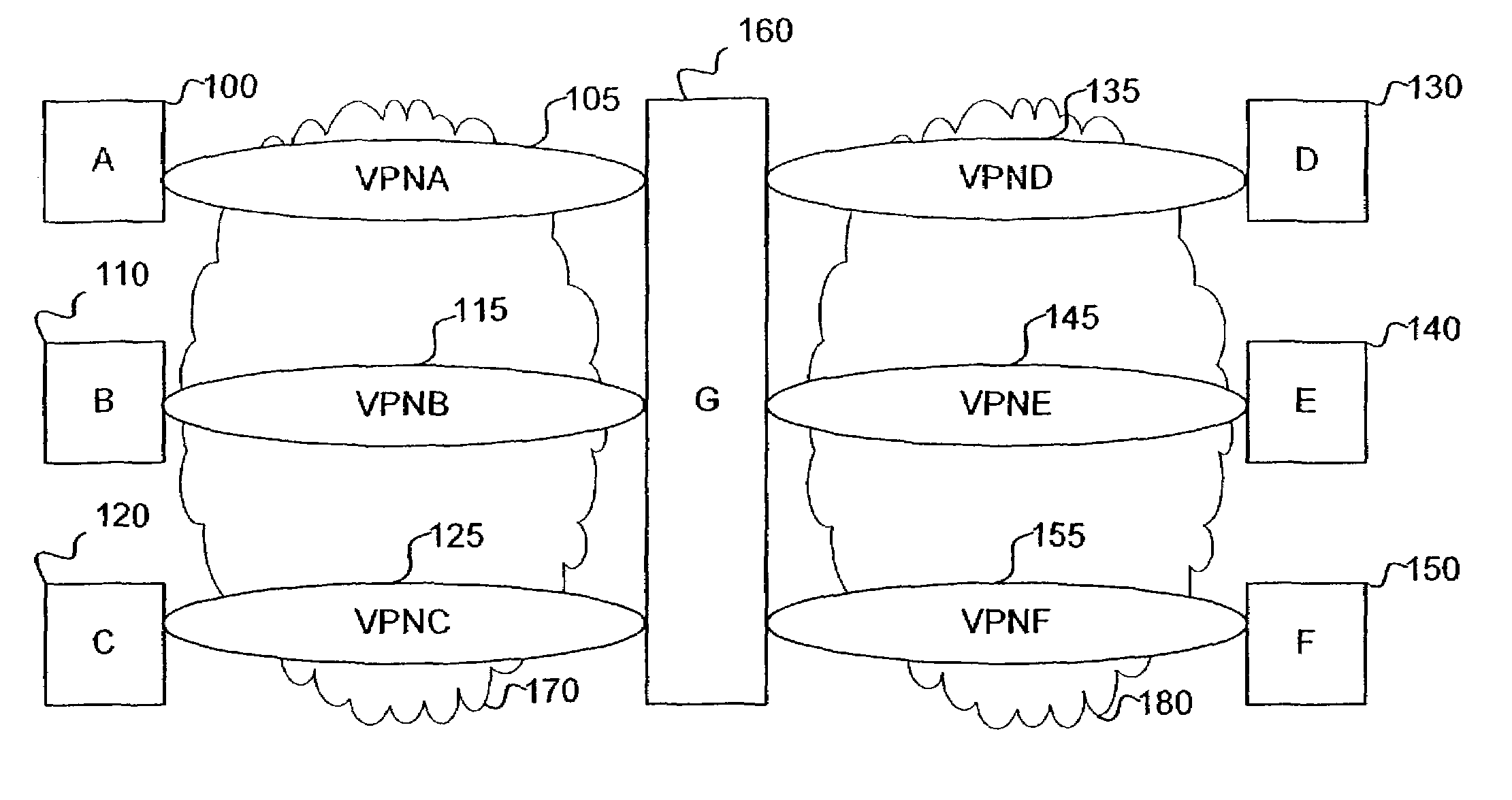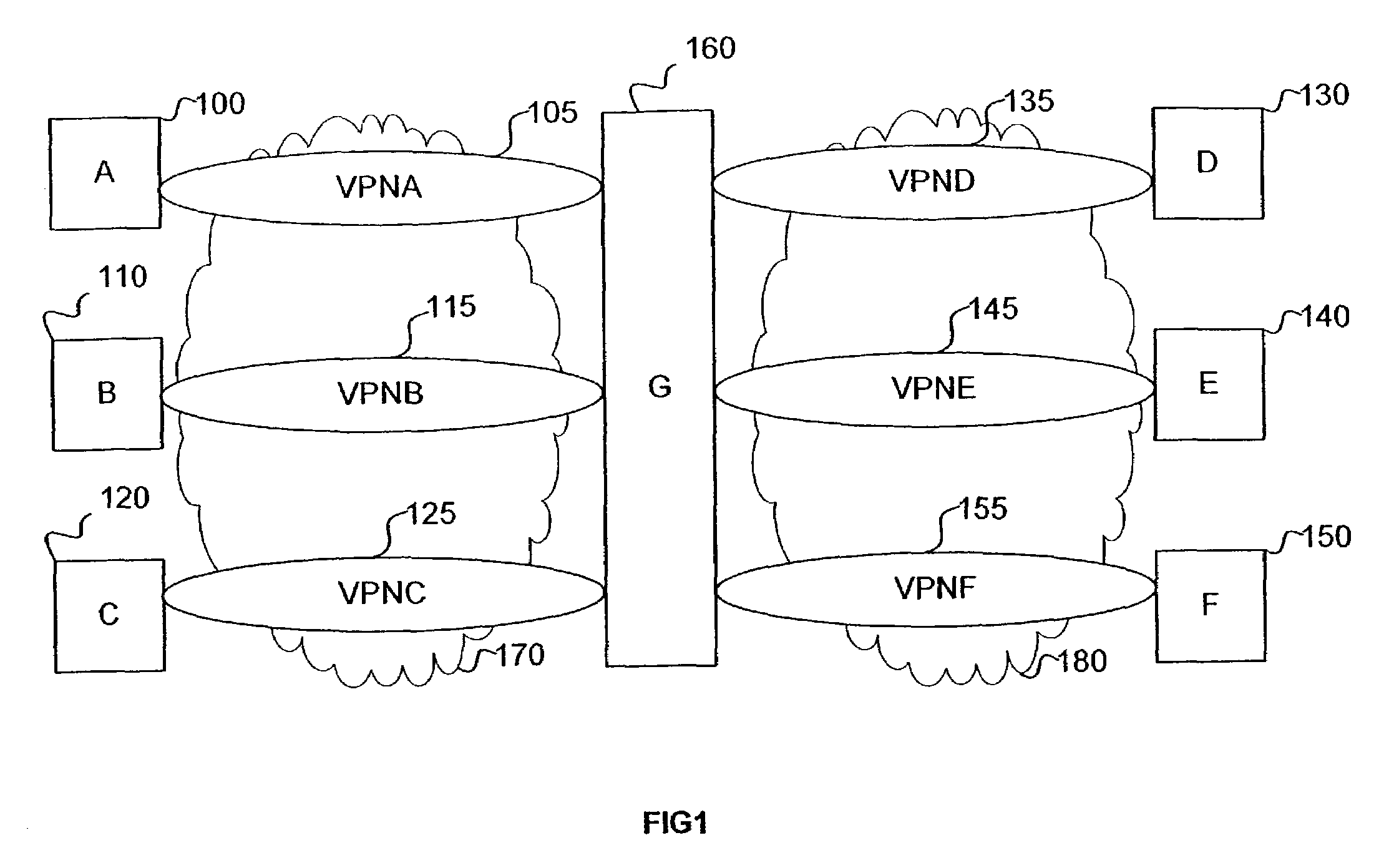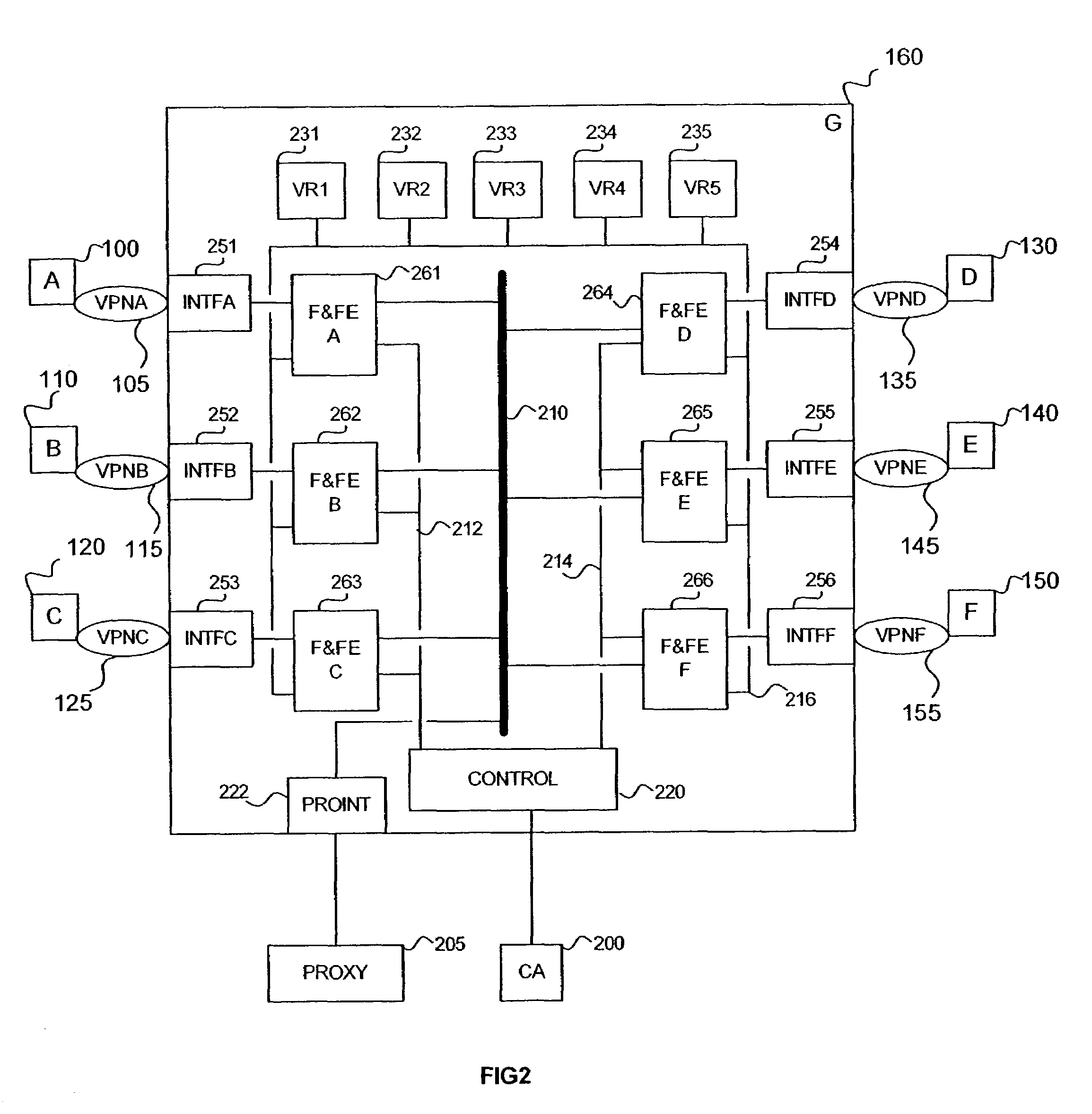Virtual private network crossovers based on certificates
a virtual private network and certificate technology, applied in the field of secure network connection formation and use, can solve the problems of administrative errors, various difficulties associated with routing filtering vpns, misconfiguration of arrangement, etc., and achieve the effect of simplifying the routing and forwarding process associated with the routing
- Summary
- Abstract
- Description
- Claims
- Application Information
AI Technical Summary
Benefits of technology
Problems solved by technology
Method used
Image
Examples
Embodiment Construction
[0067]While the present invention is described below with respect to various exemplary embodiments, the present invention is not limited to only those embodiments that are disclosed. Other embodiments can be implemented by those skilled in the art without departing from the spirit and scope of the present invention.
[0068]The present invention, according to one embodiment, provides an interconnection device, containing a VPN mapping table, that utilizes specially-constructed certificates to identify VPN properties of the user and / or device being connected and compares these properties to another VPN. According to this embodiment, the interconnection device is capable of automatically allowing VPN interconnections, without a need for a centralized decision-making process. The interconnection device implements whichever VPN rules from one or both of the interconnecting VPNs are necessary for secure interconnection. Moreover, this embodiment of the invention is independent of the types ...
PUM
 Login to View More
Login to View More Abstract
Description
Claims
Application Information
 Login to View More
Login to View More - R&D
- Intellectual Property
- Life Sciences
- Materials
- Tech Scout
- Unparalleled Data Quality
- Higher Quality Content
- 60% Fewer Hallucinations
Browse by: Latest US Patents, China's latest patents, Technical Efficacy Thesaurus, Application Domain, Technology Topic, Popular Technical Reports.
© 2025 PatSnap. All rights reserved.Legal|Privacy policy|Modern Slavery Act Transparency Statement|Sitemap|About US| Contact US: help@patsnap.com



